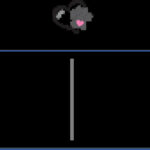Garlic, a staple in kitchens worldwide, adds a flavorful punch to countless dishes. From its raw cloves to powdered form, garlic is a versatile ingredient enjoyed by humans in various culinary creations. However, while you might appreciate the zest garlic brings to your meals, it poses a significant danger to your feline companions. If you’re a cat owner, it’s crucial to understand why garlic is toxic to cats and what steps to take to protect your beloved pet.
Why is Garlic Dangerous for Cats?
Whether it’s cooked, raw, or in any processed form, garlic is poisonous to cats and should absolutely be kept away from them. This includes all forms of garlic:
- Fresh garlic cloves
- Minced garlic (jarred or fresh)
- Garlic powder and garlic salt
- Foods containing garlic (including sauces, soups, and even some baby foods)
Garlic belongs to the Allium family of plants, which also includes other common kitchen ingredients like onions, chives, and leeks. All members of the Allium family are toxic to cats and should never be part of their diet, even in small amounts.
The danger lies in a toxic compound within garlic called sodium n-propyl thiosulfate. This substance causes oxidative damage to a cat’s red blood cells. Specifically, it leads to the formation of Heinz bodies, abnormal clumps within red blood cells. This damage makes the red blood cells fragile and prone to premature destruction, a process known as hemolysis. The consequence of hemolysis is anemia, a condition where the body lacks sufficient healthy red blood cells to carry oxygen to the tissues. Besides anemia, garlic poisoning can also lead to the discoloration of urine, turning it red or brown, indicating the presence of damaged red blood cells being excreted. Anemia is a serious condition that deprives vital organs of oxygen, and in severe cases of garlic poisoning, it can lead to organ failure and even death.
Garlic poisoning in cats is a serious medical emergency. Immediate veterinary attention is critical if you suspect your cat has ingested garlic. Do not wait for symptoms to appear before seeking help.
How Much Garlic is Toxic to a Cat? Even a Little Can Be Harmful
Garlic is significantly more potent than onions when it comes to toxicity in cats – approximately five times more toxic. Due to their smaller size and sensitivity, even small quantities of garlic can cause severe poisoning in cats.
For an average-sized cat weighing between 10 and 12 pounds, ingesting less than a single small clove of garlic, roughly 4 to 7 grams, can trigger significant toxic effects. This translates to alarmingly small amounts: less than half a teaspoon of minced garlic or even less than an eighth of a teaspoon of garlic powder can be dangerous for your feline companion.
It’s important to remember that the amount of garlic in cooked dishes and pre-prepared foods can be difficult to accurately determine. Therefore, the safest approach is to assume any amount of garlic is potentially harmful. If you know or suspect your cat has eaten any garlic or food containing garlic, immediate veterinary intervention is necessary.
Recognizing Garlic Poisoning: Symptoms to Watch For
If your cat has consumed garlic, clinical signs of poisoning may appear within 24 hours, but in some cases, they can be delayed for a few days. Be vigilant and watch out for the following symptoms:
- Vomiting: Your cat may try to expel the toxic substance by vomiting.
- Diarrhea: Garlic poisoning can cause gastrointestinal upset, leading to diarrhea.
- Loss of Appetite or Decreased Appetite: Your cat may show reduced interest in food or refuse to eat altogether.
- Abdominal Pain: Your cat’s abdomen may be tender or painful to the touch. They might exhibit signs of discomfort such as restlessness or a hunched posture.
- Pale Gums: Healthy gums are pink. In cases of anemia from garlic poisoning, gums may appear pale pink, white, or even pale yellow.
- Lethargy and Weakness: Your cat may become unusually tired, weak, and less active than usual.
- Discolored Urine: Urine may turn red or brown due to the presence of damaged red blood cells.
- Increased Respiratory Rate: Your cat may breathe faster as their body tries to compensate for reduced oxygen levels.
- Increased Heart Rate: The heart may beat faster to circulate oxygen more rapidly.
- Collapse: In severe cases, garlic poisoning can lead to collapse due to severe anemia and organ dysfunction.
My Cat Ate Garlic! What Should I Do Now? Immediate Action is Key
Even if you suspect your cat has ingested only a small amount of garlic, it’s crucial to act swiftly. If your cat eats garlic in any form, take them to your veterinarian or the nearest emergency veterinary clinic immediately.
If possible, try to estimate the amount of garlic your cat consumed and note the time of ingestion. If you know what your cat ate (e.g., a specific dish or product), bring the packaging with you to the vet. This information can be helpful for your veterinarian in determining the best course of treatment.
For immediate guidance, you can also contact:
- Your Veterinarian: Call your regular vet’s office immediately, especially if it’s during business hours.
- Pet Poison Helpline: Reach out to the Pet Poison Helpline at 855-764-7661 (a consultation fee may apply).
- ASPCA Animal Poison Control Center: Contact the ASPCA Animal Poison Control Center at 888-426-4435 (a consultation fee may apply).
These resources can provide advice on whether emergency veterinary care is needed and guide you on the next steps.
Crucially, do not attempt to induce vomiting at home. Inducing vomiting in cats can be risky and is best performed by a veterinary professional. Do not delay seeking professional veterinary care. Prompt treatment significantly improves your cat’s chances of recovery.
Veterinary Treatment for Garlic Poisoning in Cats
Diagnosing garlic poisoning typically involves a combination of factors: your account of the incident (history), your cat’s clinical signs, and laboratory tests. A microscopic examination of a blood sample can reveal characteristic damage to red blood cells caused by sodium n-propyl thiosulfate, aiding in confirming garlic toxicity.
If your cat has ingested garlic within the last couple of hours, your veterinarian might attempt to induce vomiting at the clinic to remove garlic from the stomach. However, inducing vomiting in cats can be challenging and isn’t always safe. Your vet will discuss the safest and most effective decontamination options with you. They might administer activated charcoal, an oral medication that helps to absorb any remaining toxins in the digestive system, preventing further absorption into the bloodstream.
In more severe cases of garlic poisoning, hospitalization may be necessary. Treatment can include:
- Intravenous (IV) Fluids: IV fluids help to maintain hydration, support kidney function, and flush out toxins.
- Blood Transfusion: In cases of severe anemia, a blood transfusion may be required to replenish red blood cells and improve oxygen-carrying capacity.
- Supportive Care: Additional supportive care may include medications to manage symptoms like nausea, diarrhea, and abdominal pain.
The prognosis for cats with garlic poisoning depends on the amount of garlic ingested and the promptness of treatment. With timely veterinary care, most cats who have ingested small amounts of garlic recover fully without long-term complications. However, severe garlic poisoning can be life-threatening, especially if left untreated.
Prevention is the most effective way to protect your cat from garlic poisoning. Never intentionally feed your cat garlic or foods containing garlic, including garlic powder. Be mindful of all ingredients in human food, and store garlic and garlic-containing products safely out of your cat’s reach. By being informed and proactive, you can ensure your feline companion stays safe and healthy.
References
Peterson, Michael E. Small Animal Toxicology. 3rd ed. Elsevier Saunders; 2001.
Hovda, Lynn, et al. Blackwell’s Five-Minute Veterinary Consult Clinical Companion: Small Animal Toxicology. 2nd ed. John Wiley & Sons; 2016.
Featured Image: Adobe/Kristina Blokhin
WRITTEN BY
Veronica Higgs, DVM
Veterinarian
Dr. Veronica Higgs is a 2010 graduate from Auburn University College of Veterinary Medicine. She then completed a 1-year rotating…


